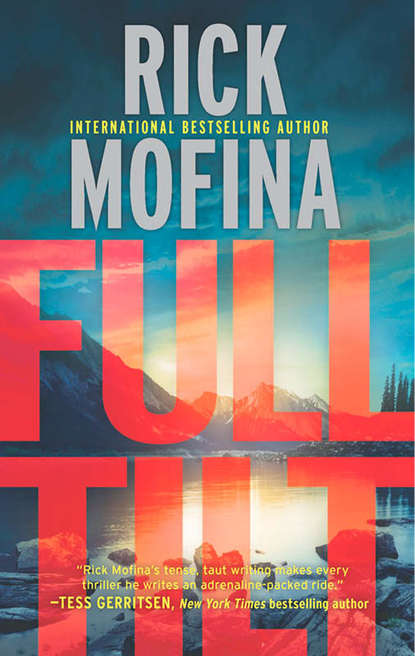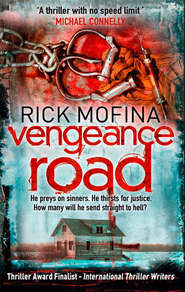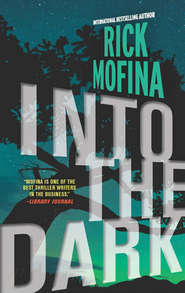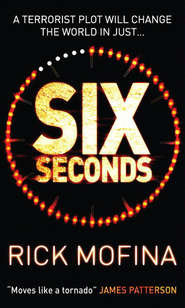По всем вопросам обращайтесь на: info@litportal.ru
(©) 2003-2024.
✖
Full Tilt
Автор
Год написания книги
2019
Настройки чтения
Размер шрифта
Высота строк
Поля
“So where are we on my double?”
“We’ve submitted dental charts for the female and male to local and regional dentists and dental associations. Toxicology has gone to Syracuse and we’ve submitted DNA to the FBI’s databank.”
“That’s it?”
“Well, I don’t think the male died in the fire.”
“That’s new. What’s the cause for him?”
“Possibly a gunshot wound to the head. I just recovered a round, looks like a nine millimeter. You need to find a gun at the scene, Ed.”
* * *
As they drove to the scene, Dickson raised more questions.
“So how does a dead man start a fire, Ed?”
“Maybe he didn’t start it. Or, maybe he tied her up, started it, then shot himself in front of her, leaving her to burn to death.”
“If he wanted to end things, like the note suggests, why not shoot the woman first? Make sure she’s dead?”
“Maybe he did and missed and we haven’t recovered the rounds yet. My gut tells me we’re just scratching the surface here, Paul.”
As Dickson shook his head in puzzlement, Brennan returned to the woman’s dying words.
There are others.
* * *
The bright yellow plastic tape surrounding the blackened remnants of the barn bounced in the midday breeze. Techs from Troop B’s forensic unit, clad in white-hooded coveralls and facial masks, continued their painstaking processing of the ruins.
Mitch Komerick, the senior investigator who headed the squad, brushed ash from his cheek as he pulled down his mask to meet Brennan and Dickson at the southwest corner of the line.
“Got your message on the update, Ed,” Komerick said.
“Find a gun?”
Komerick wiped the sweaty soot streaks from his face, then shook his head.
“No weapon and no rounds, or casings, so far.”
Brennan nodded and looked off in frustration.
“There are deep fissures where we found the male,” Komerick said, “big enough to easily swallow a gun. My money says that’s where it is. We’re going to put a drainpipe camera down there. We’re far from done.”
“All right.”
“My people have gridded the scene, and we’ll sift through every square inch of the property. We’ve sent the pickup down to the lab in Ray Brook for processing. The arson team says an accelerant, probably unleaded fuel, was used, so the fire was intentional.”
“Okay.”
“But we’ve got something to show you, something disturbing. Suit up.”
After Brennan pulled on coveralls, he followed Komerick and his instructions on where to step as he led him into the destruction. The smell of charred lumber and scorched earth was heavy. Some of the singed beams had been removed and stacked neatly to the side, revealing sections that had been processed. There was a heap of small machinery, now charred metal. Komerick pointed to the wreckage. “Look, these were livestock stalls that someone converted to small rooms, confinement cells.”
“How can you tell? It’s such a mess.”
“We found heavy doors with locks, metal shackles and hardware anchored in the walls and floors, remains of mattresses, at least half-a-dozen cells so far. Somebody was definitely using the place, possibly for porno movies, for bondage, for torture. God only knows, Ed.”
Brennan felt the hairs on the back of his neck rising.
“Mitch, over here!”
One of the forensic technicians was on his knees delicately brushing the ground with the care of an archaeologist. Another technician was recording it.
“Look,” the technician said while clearing the small object, “we can run this through missing persons databases and ViCAP.”
Rising from the grave of sooty earth and ash was a fine chain and a stylized charm of a guardian angel.
5 (#ulink_dafe0128-c6ac-5b72-9f58-5fb80b73881d)
New York City
Kate Page, a reporter with Newslead, the global news service, blinked back tears as she consoled the anguished father, who she’d reached on his phone in Oregon.
The man on the line was Sam Rutlidge. His eleven-year-old son, Jordan, had vanished six years ago while walking to the corner store, two blocks from his home in Eugene, Oregon. Kate was writing a feature on missing persons across the country, on the toll cold cases exact on the families.
“I accept that he’s gone,” Sam said, “and before cancer took my wife, she told me she’d accepted it, too, that she’d see our boy in heaven. But I need to know what happened to him. Not knowing hurts every day, like an open wound that won’t heal, you know?”
Kate knew.
She underlined his words in her notebook, the quotes she’d use in her story. Her heart ached for Sam, a haunted trucker. She asked him a few more questions before thanking him for the interview.
After hanging up, Kate cupped her face in her hands and let out a long breath. Then she walked from her desk across the newsroom to the floor-to-ceiling windows where she looked at the skyline of midtown Manhattan.
It never gets any easier.
A part of her died each time she talked to a grieving mom or dad. It always resurrected her own pain. When Kate was seven years old her mother and father had died in a hotel fire. After the tragedy, Kate and her little sister, Vanessa, lived with relatives, then in foster homes. Two years after their parents’ deaths, Kate and Vanessa’s foster parents took them on a vacation. They were driving in the Canadian Rockies when their car flipped over and crashed into a river.
The images—hell, that moment in her life—were fused into her DNA.
The car sinking...everything moving in slow motion...the windows breaking open...the freezing water...grabbing Vanessa’s hand...pulling her out...nearing the surface...the icy current numbing her...her fingers loosening...Vanessa slipping away...disappearing... Why couldn’t I hold you? I’m so sorry, so sorry.
Kate was the only one who’d survived.
Her sister’s body had never been found. Searchers reasoned that it got wedged in the rocks downriver. Still, in her heart, Kate never gave up believing that Vanessa had somehow gotten out of the river.
Over the years, Kate had age-progressed photos of Vanessa made and submitted them with details to missing persons groups. She drew on her contacts with them, with police and the press, and she looked into open cases. But any leads always dead-ended.











